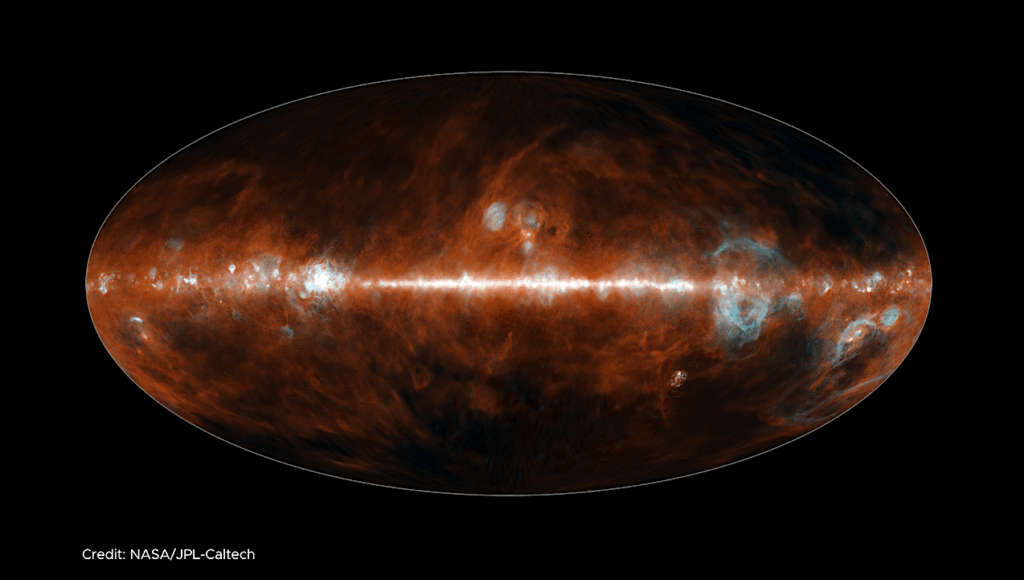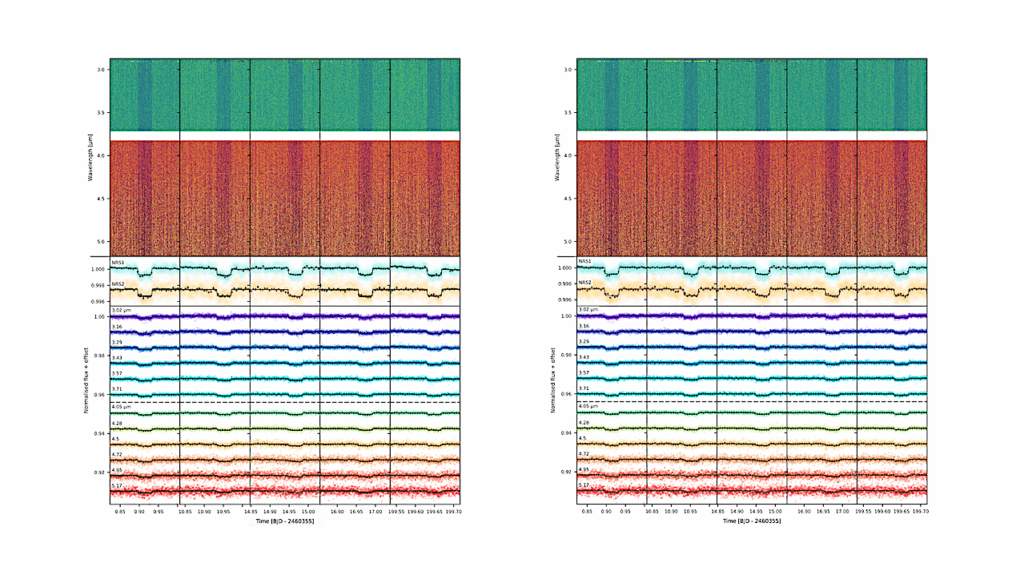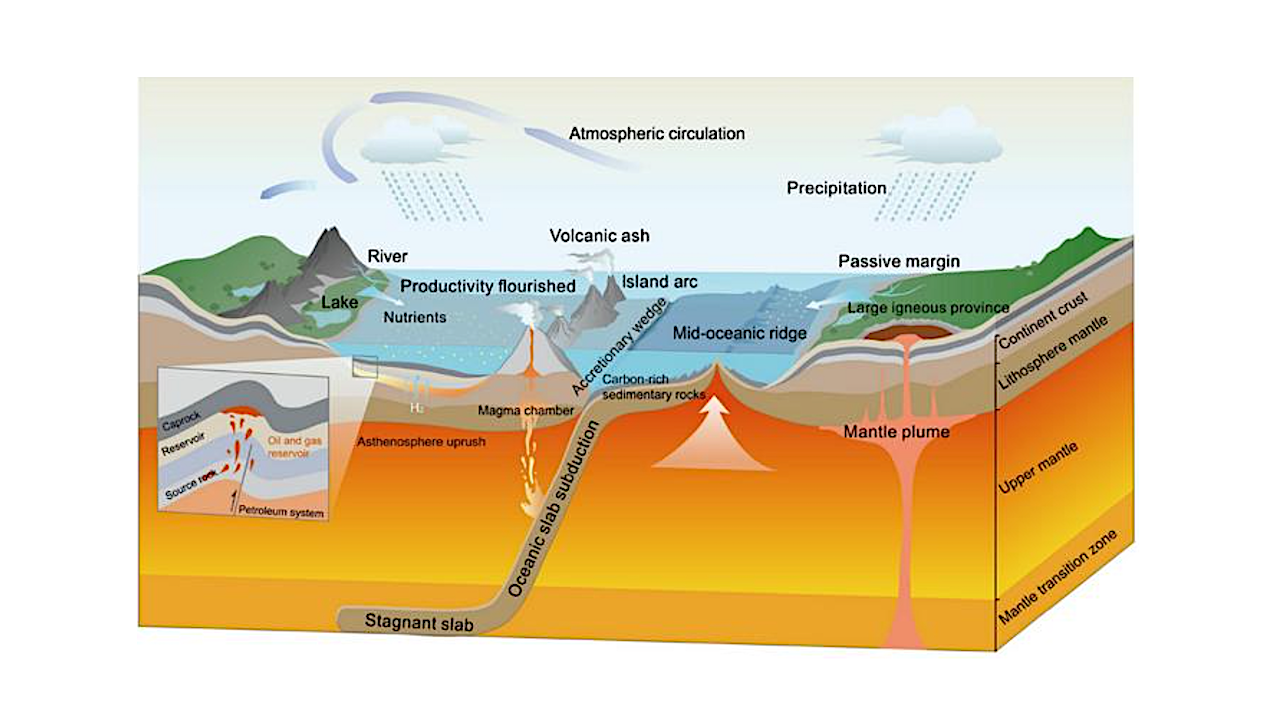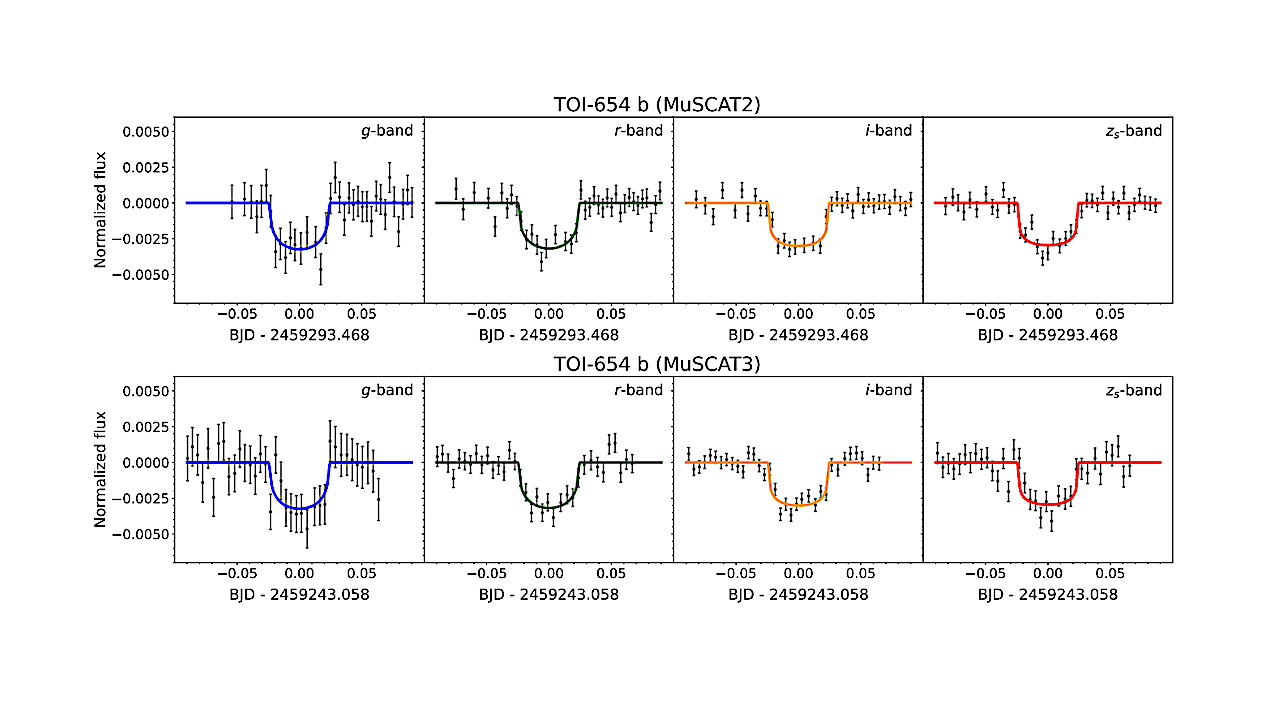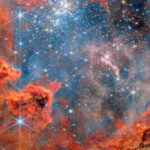Now Reading: Low D/H Ratio For Benzonitrile In TMC-1: Implication For The Origin Of Polycyclic Aromatic Hydrocarbons In Cold Dark Clouds
-
01
Low D/H Ratio For Benzonitrile In TMC-1: Implication For The Origin Of Polycyclic Aromatic Hydrocarbons In Cold Dark Clouds
Low D/H Ratio For Benzonitrile In TMC-1: Implication For The Origin Of Polycyclic Aromatic Hydrocarbons In Cold Dark Clouds
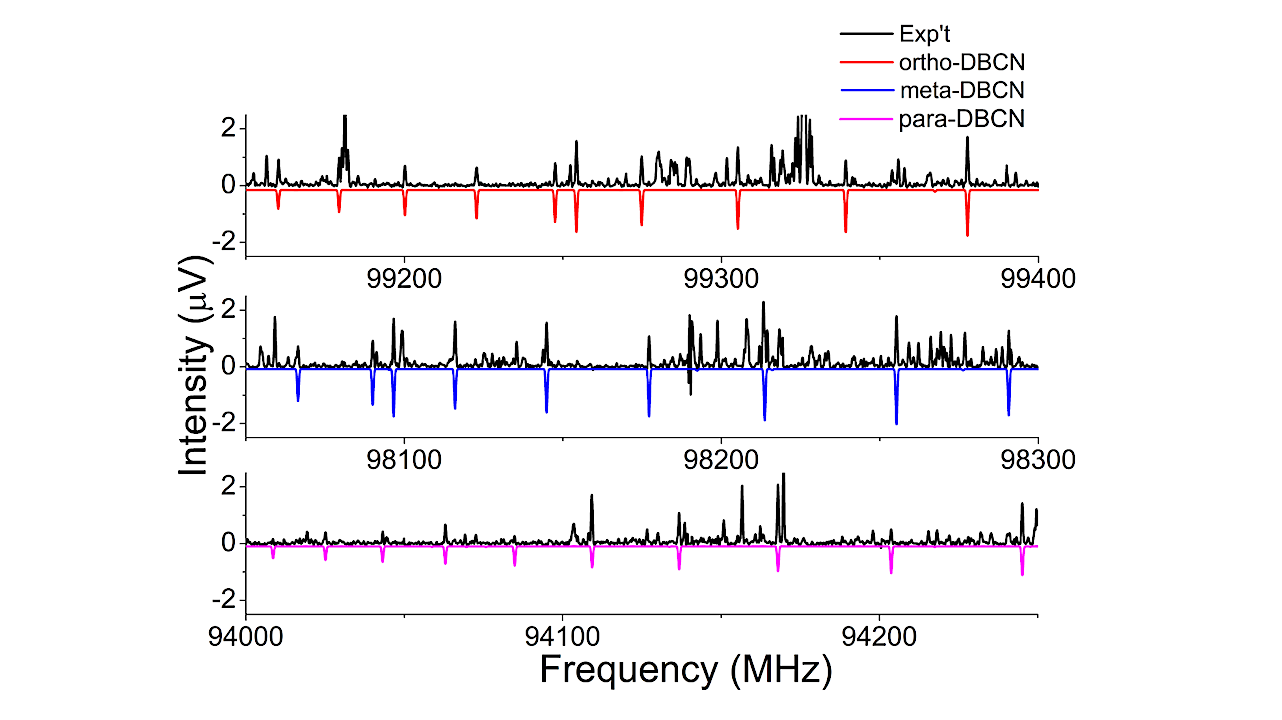

Portion of the spectra of ortho- (top), meta- (middle), and para- (bottom) deuterated benzonitrile (DBCN) recorded in the 75- 110 GHz range. The experimental spectra are shown in black above the x axis, while the simulated spectra at 300 K (calculated from the rotational parameters) are shown in colors below the x axis. — astro-ph.GA
Radioastronomical observations have recently discovered PAHs of moderate size (up to 24 carbon atoms) in cold dark clouds, although it is currently unknown whether they are formed in situ through a bottom-up mechanism or from larger PAHs (20-100 carbon atoms) inherited from a previous diffuse stage in a top-down scenario.
Infrared observations have recently shown that large PAHs present in UV-illuminated regions are strongly enriched in deuterium. In order to shed light on the origin of PAHs in cold clouds, we have searched for deuterated benzonitrile in the cold dark cloud TMC-1.
To that purpose we have synthesized the three isomers (ortho, meta, and para) of monodeuterated benzonitrile, measured their rotational spectra across the 2-18 GHz and 75-110 GHz frequency ranges in the laboratory, and searched for them in TMC-1 using data from the QUIJOTE line survey.
We did not detect any of the three species and have derived a 3sigma upper limit on the column density of each of them of 3.0e10 cm-2, meaning a fractional abundance relative to H2 of <3e-12. We derived a D/H ratio (which we define as the total number of D atoms with respect to the total number of H atoms present in benzonitrile) of <1.2 %.
This value is in line with the range of D/H ratios observed for other molecules in TMC-1 (0.06-3.3 %), where deuterium enrichment is explained in terms of isotopic fractionation at low temperature. It is however below the range of D/H ratios derived for large unspecific PAHs from JWST observations of the galactic PDRs Orion Bar and M17 and the galaxies M51 and NGC3256-S (between 1% and <17%).
Although it is not straightforward to compare the deuteration of PAHs in dark and UV-irradiated clouds, our results suggest that the population of PAHs detected in cold dark clouds does not result from the fragmentation of larger PAHs inherited from the previous diffuse stage in a top-down scenario.
A. L. Steber, J. Janeiro, C. Cabezas, M. Agundez, M. Pereira-Santaella, C. Perez, D. Perez, D. Heras, A. Lesarri, I. Garcia-Bernete, J. R. Goicoechea, J. Cernicharo
Comments: Accepted for publication in A&A
Subjects: Astrophysics of Galaxies (astro-ph.GA)
Cite as: arXiv:2507.16552 [astro-ph.GA] (or arXiv:2507.16552v1 [astro-ph.GA] for this version)
https://doi.org/10.48550/arXiv.2507.16552
Focus to learn more
Submission history
From: Marcelino Agundez
[v1] Tue, 22 Jul 2025 13:04:05 UTC (4,134 KB)
https://arxiv.org/abs/2507.16552
Astrobiology, Astrochemistry,
Stay Informed With the Latest & Most Important News
Previous Post
Next Post
-
 01From Polymerization-Enabled Folding and Assembly to Chemical Evolution: Key Processes for Emergence of Functional Polymers in the Origin of Life
01From Polymerization-Enabled Folding and Assembly to Chemical Evolution: Key Processes for Emergence of Functional Polymers in the Origin of Life -
 02Panasonic Leica Summilux DG 15mm f/1.7 ASPH review
02Panasonic Leica Summilux DG 15mm f/1.7 ASPH review -
 03How New NASA, India Earth Satellite NISAR Will See Earth
03How New NASA, India Earth Satellite NISAR Will See Earth -
 04And Thus Begins A New Year For Life On Earth
04And Thus Begins A New Year For Life On Earth -
 05Astronomy Activation Ambassadors: A New Era
05Astronomy Activation Ambassadors: A New Era -
06SpaceX launch surge helps set new global launch record in 2024
-
 07Two Black Holes Observed Circling Each Other for the First Time
07Two Black Holes Observed Circling Each Other for the First Time












